Making Bubble Hash
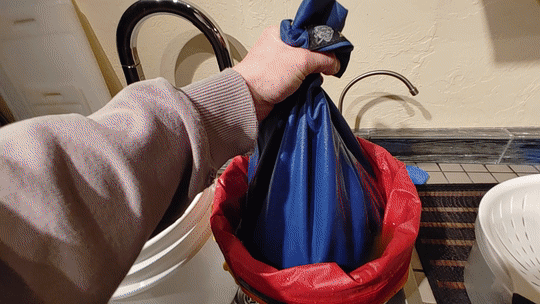
This is a third post in a series of posts about making bubble hash.
The previous posts URLs are below:
Making Bubble Hash Getting Everything Ready!
Making Bubble Hash Mixing!
Pulling The Larger Micron Bubble Bags
The 220 Micron Bubble Bag
After letting the majority of ice melt, I started to pull the Bubble Bags out of the hash water in the five gallon bucket. Each bubble bag has a certain sized micron screen and in the five gallon bucket they are arranged in order from smallest micron screen on the bottom to the largest on top. The very first bag on top has a large micron size of 220 microns (Blue). The trichomes we are looking for is on the smaller micron screen bags ie 73 micron and 25 micron screen bags.
You may notice the smallest micron bubble bag on the bottom in the picture below is 120 microns. These three bags (220, 160, 120 micron bubble bags) are for extracting plant material and larger sized plant material before we start to extract with smaller micron screened bubble bags. This will also help in keeping plant material out of finished product.
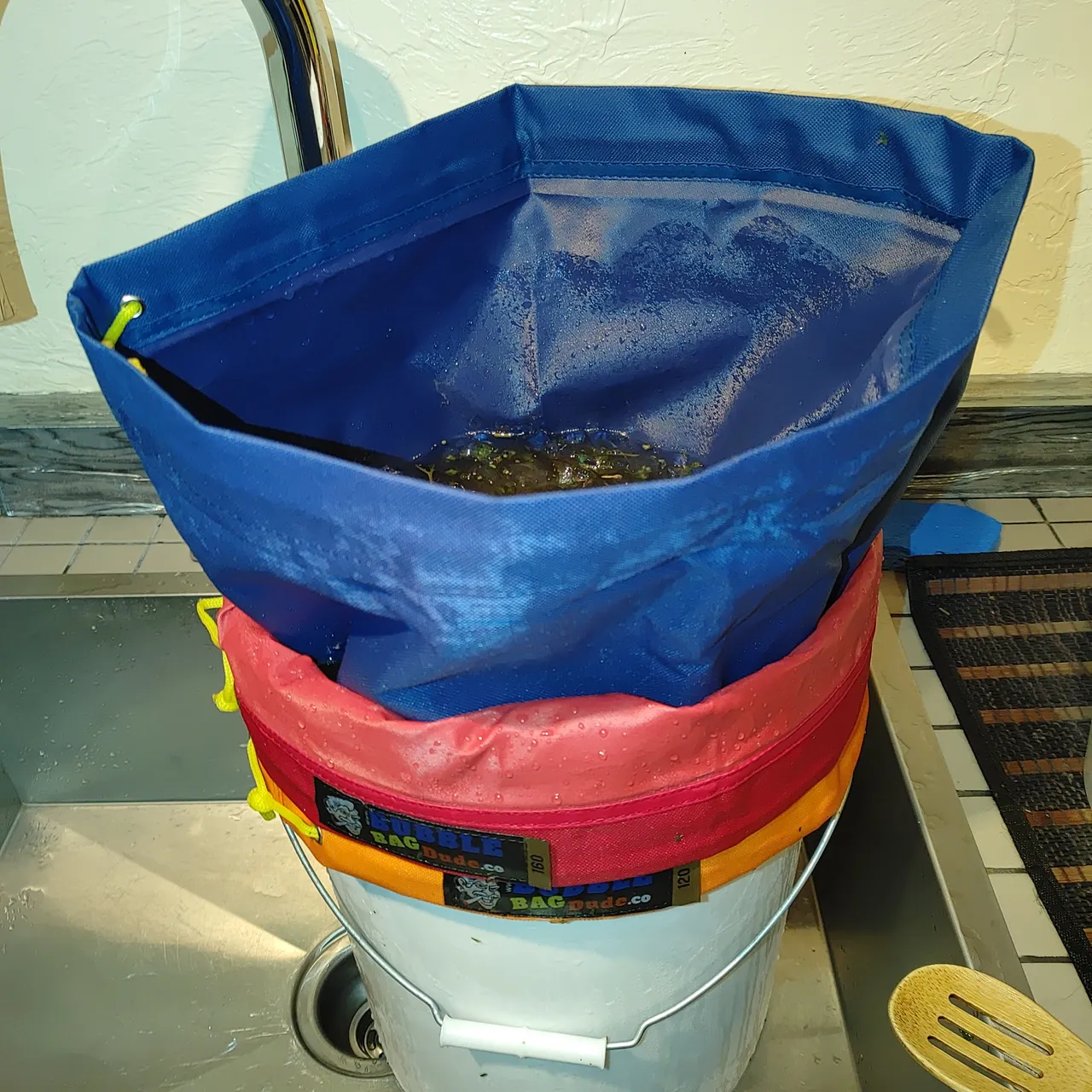

Unfortunately, I am a one man band. It is difficult to take pictures and film all steps of this process, so no pictures were taken of certain steps of this process.
You can see another five gallon bucket next to bucket with bubble bags in the gif above. After the water is drained from each bag I will use the five gallon bucket to the left to place the bag just pulled into and then material in each bag rinsed with water. Remaining water will be re-added to original bucket.
We saved the leftover material in the 220 bubble bag for making food later on.
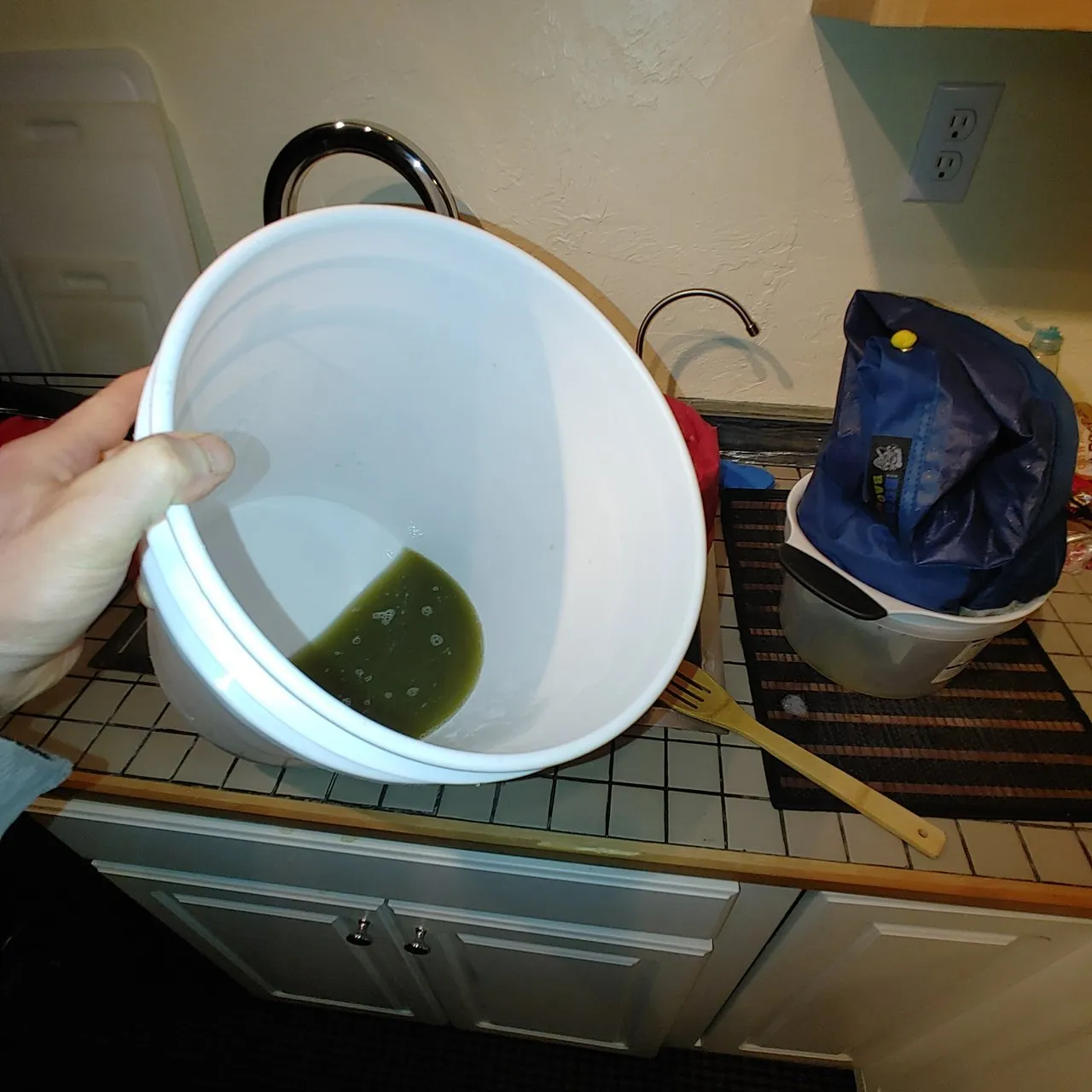
The 160 Micron Bubble Bag
Now that the bulky plant material has been removed with the 220 micron bubble bag, I can continue extracting by pulling the 160 micron bubble bag (Red).
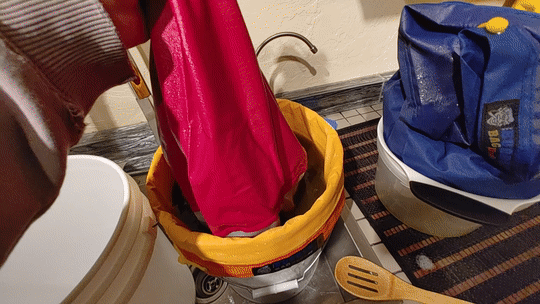
Using the five gallon bucket on the left next to the main batch of hash, I will place the 160 bubble bag in and extract the material in the 160 bag. Typically, the material in the 160 bag and 120 bag even, has more chlorophyll and plant fats etc. than delicious trichomes.

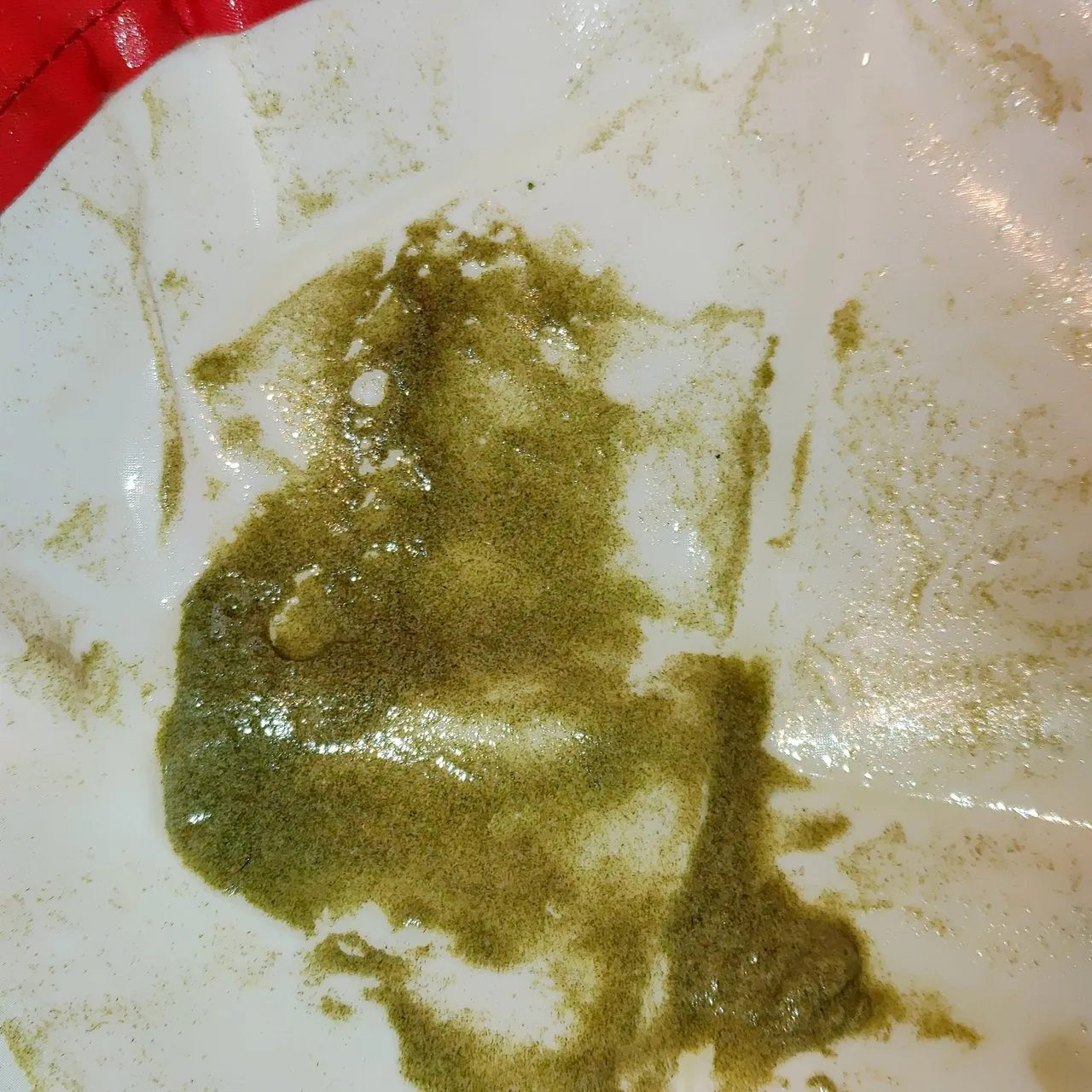
After rinsing the inside of the bubble bag with water and then using a silicone spatula, I harvested the hash material out of the bubble bag and on to a labeled coffee filter.
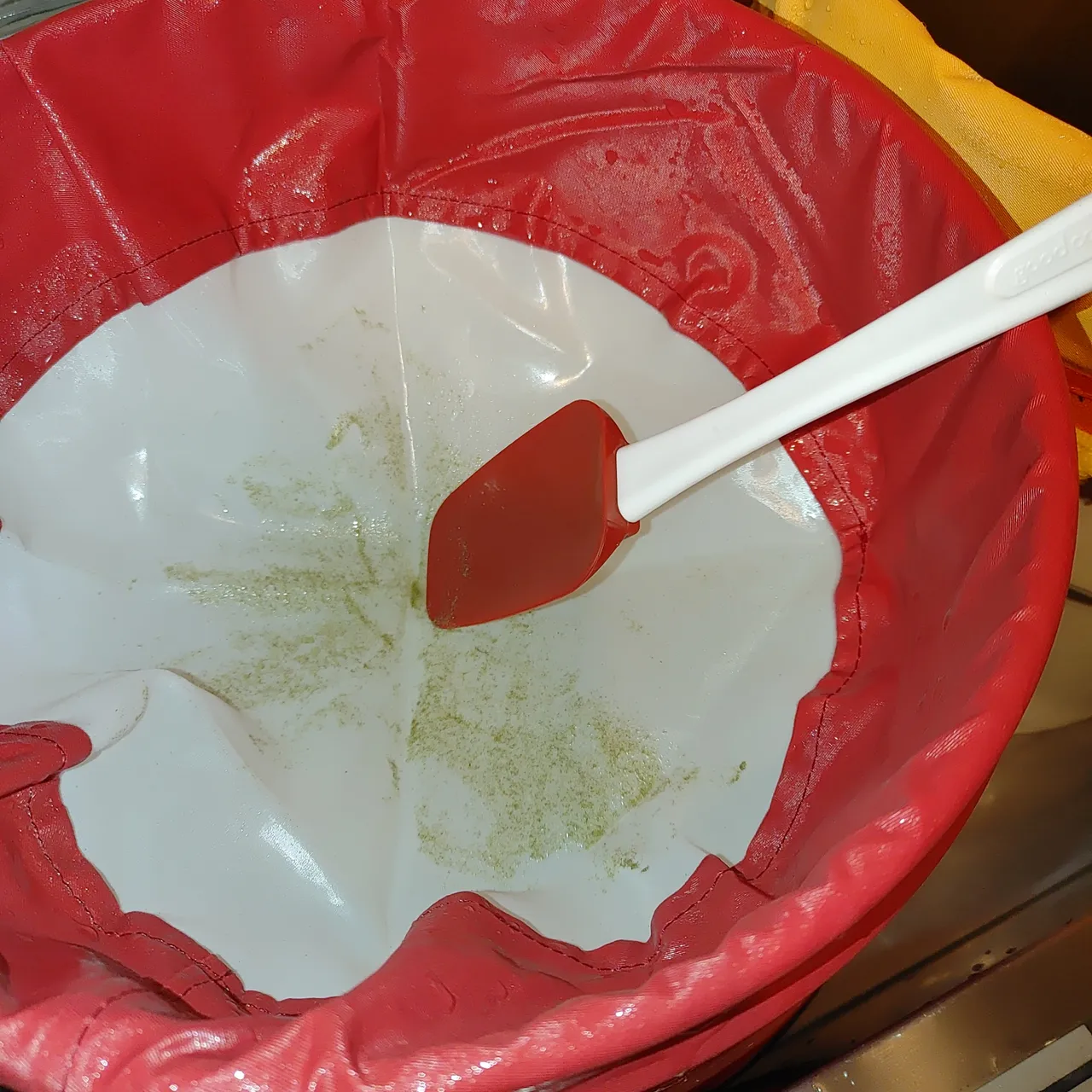
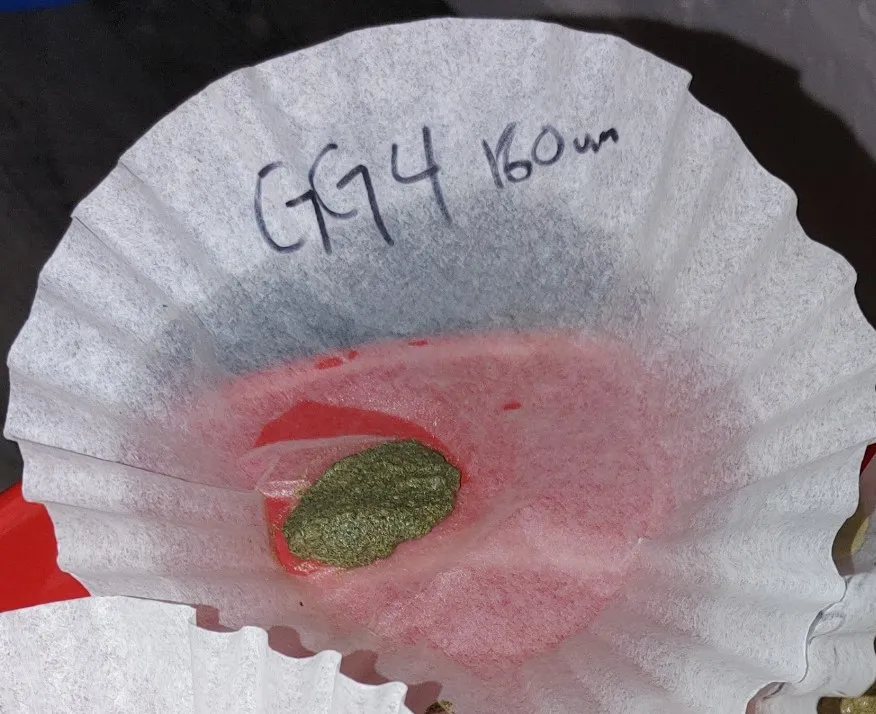
Before moving on to the next bag, I will dip the inside of the bubble bag (micron screen part) into the main bucket. Also placing the remaining water from the rinsing into the main batch.
I am rinsing each bag thoroughly after this process is done and setting aside to dry.

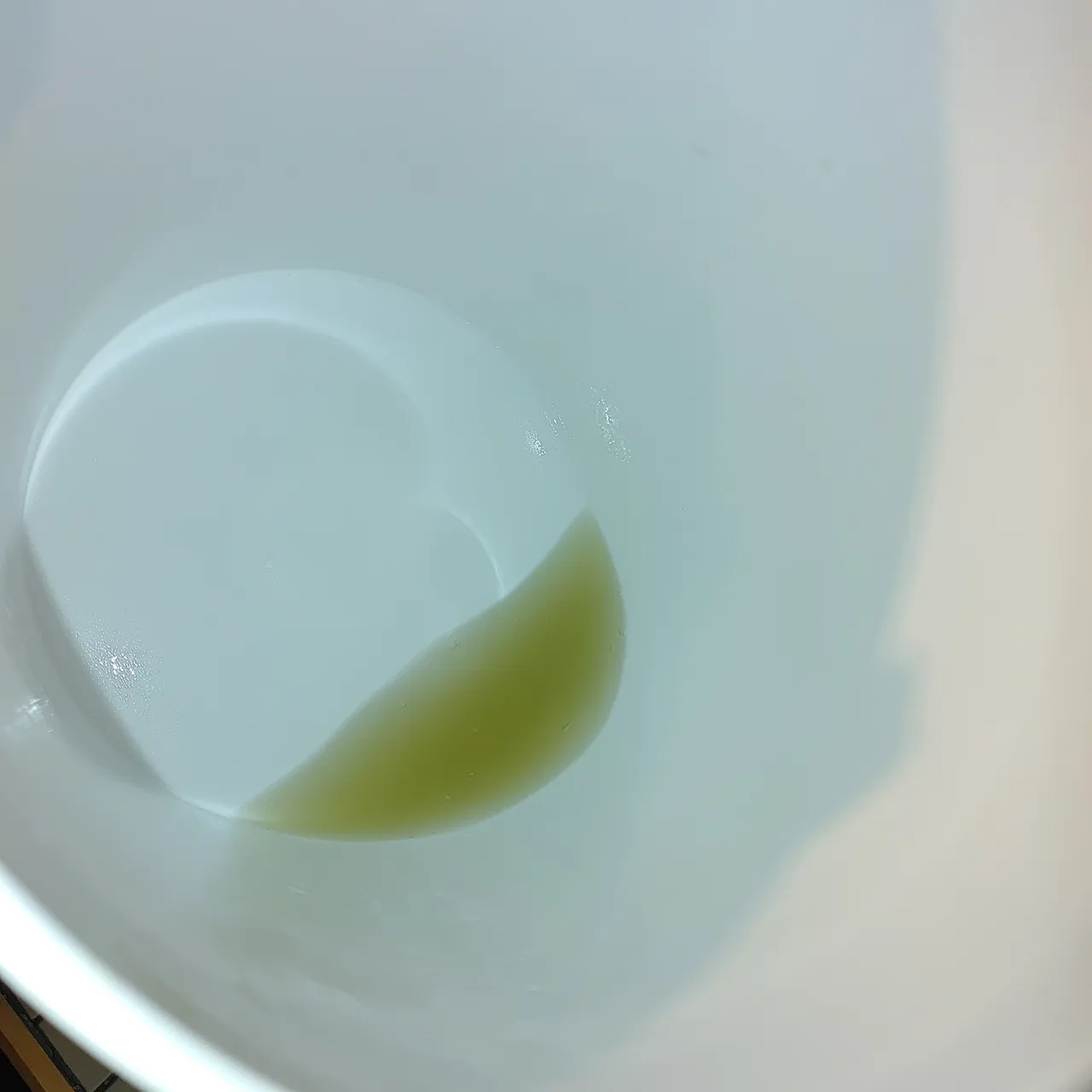
The 120 Micron Bubble Bag
The same process for the 120 micron bubble bag is repeated here as well. Pull the 120 bag, place in empty five gallon bucket to the left, rinse with water, harvest with silicone spatula, place wet hash material on coffee filter etc.

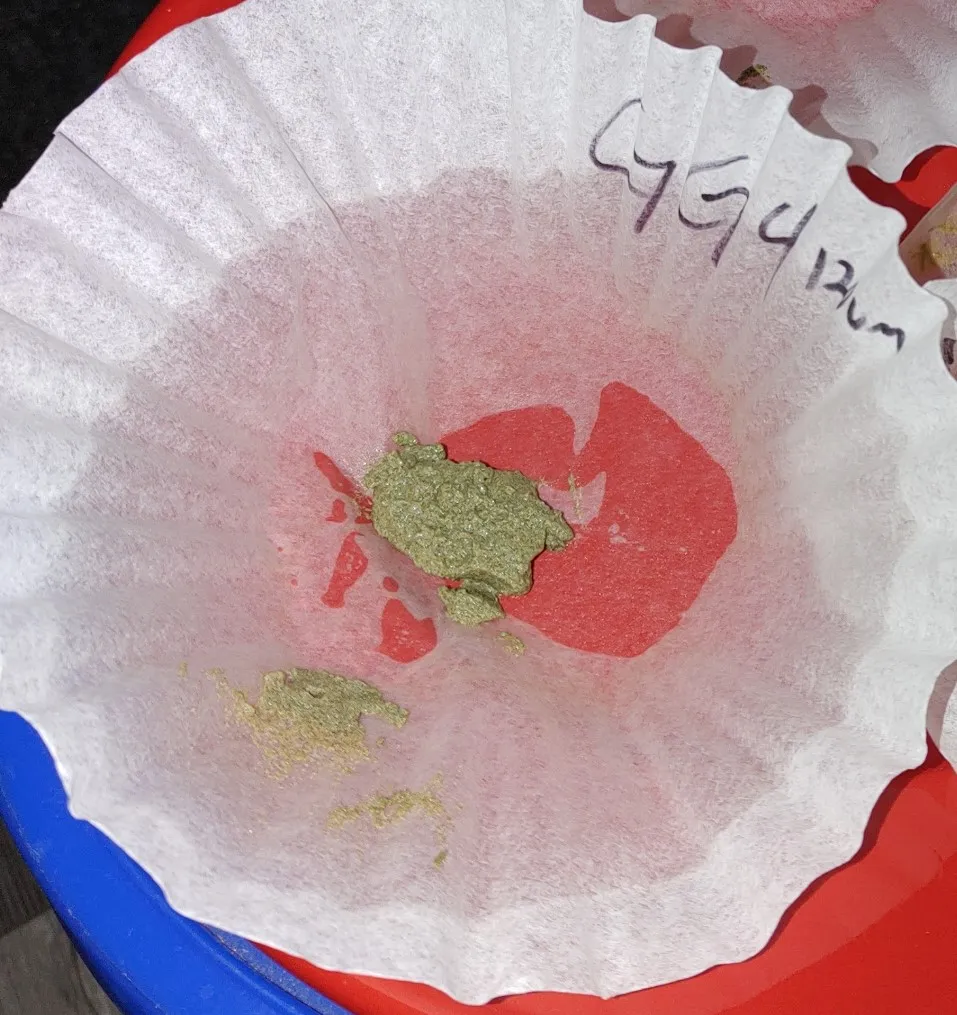
Ready To Use The 73 & 25 Micron Bubble Bags!
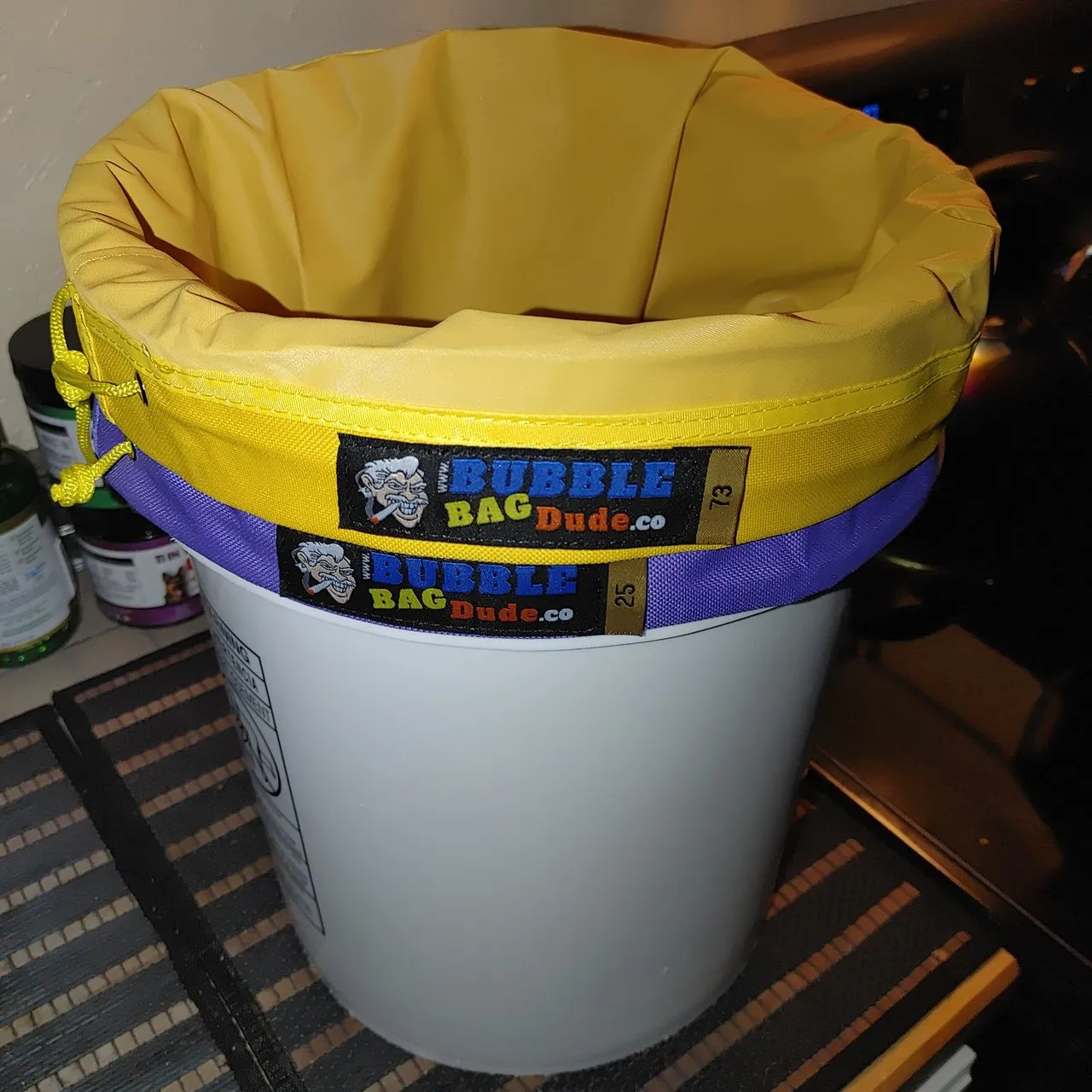
After pulling the larger screened bubble bags, we now can prepare the un-used five gallon bucket with the 25 micron bubble bag and 73 micron bubble bag. With of course the 73 micron bubble bag on top.
Now, I have to pour the remaining liquid/hash water into the prepared 73/25 micron bubble bag bucket.
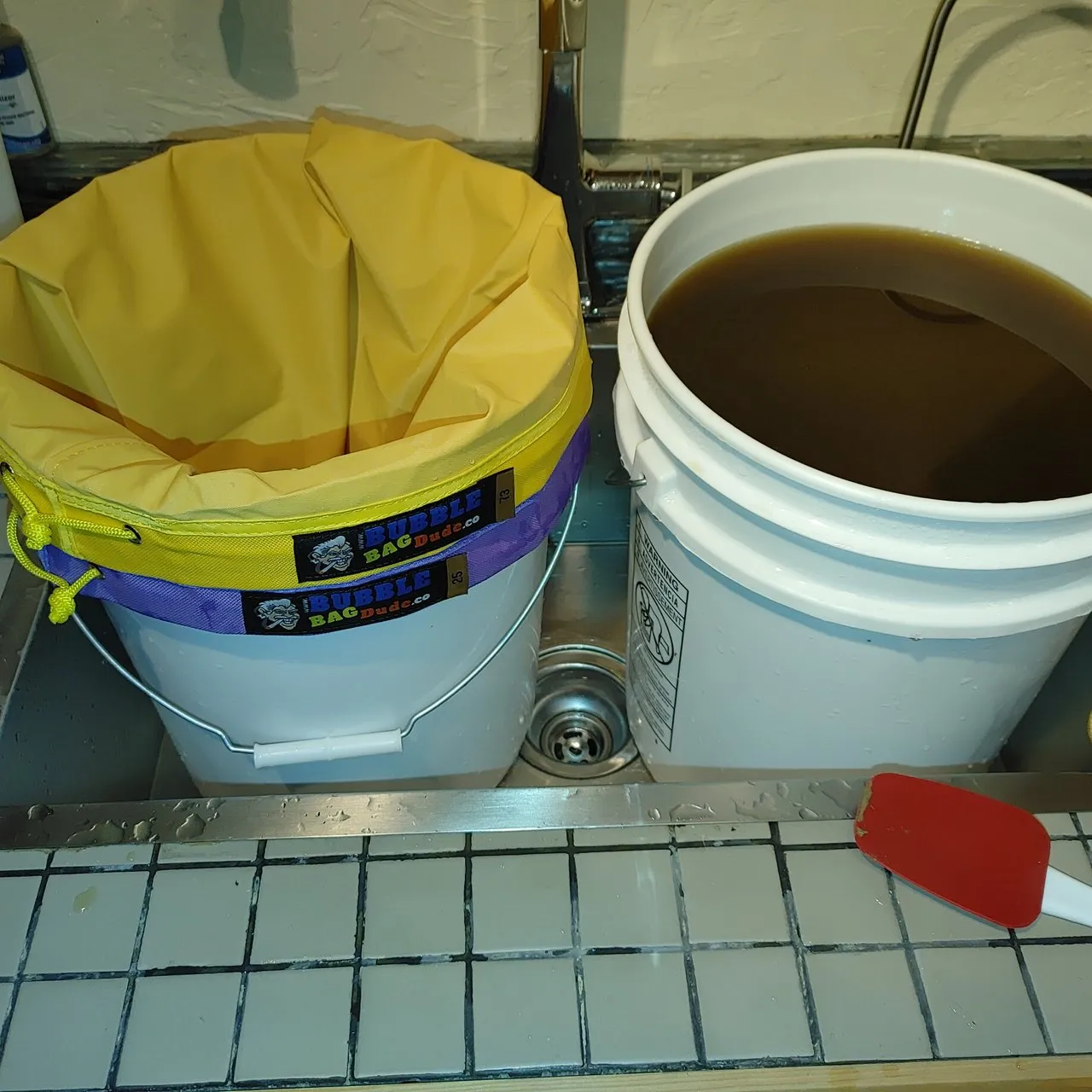

Pulling The 73 and 25 Micron Bubble Bags
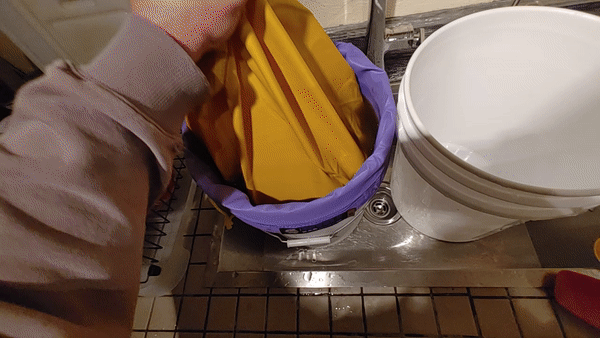
This process is pretty intuitive at this part of the process. Pretty much rinse and repeat... literally!
The same process for the 120 micron bubble bag is repeated here as well. Pull the 120 bag, place in empty five gallon bucket to the left, rinse with water, harvest with silicone spatula, place wet hash material on coffee filter etc.

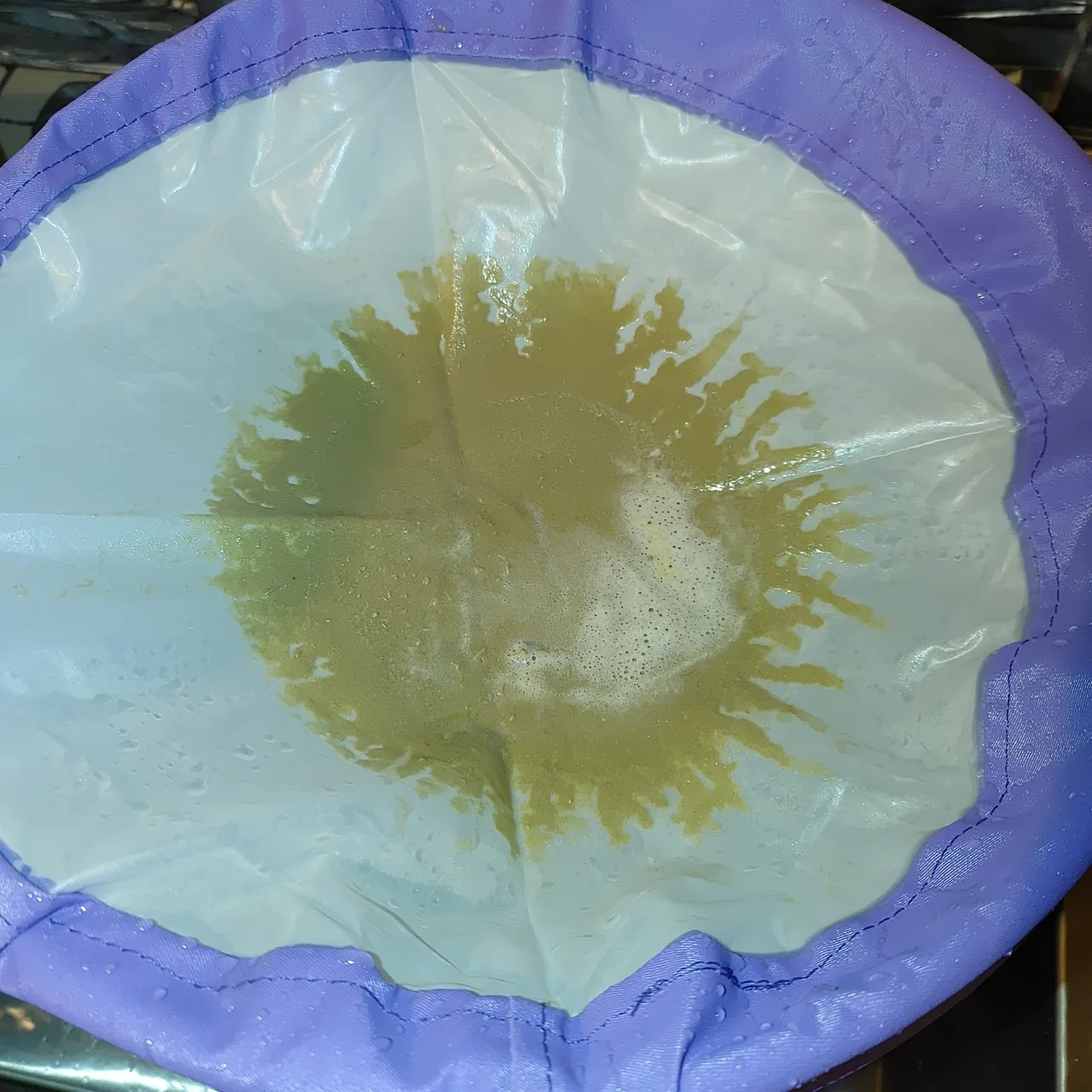
Drying Time!
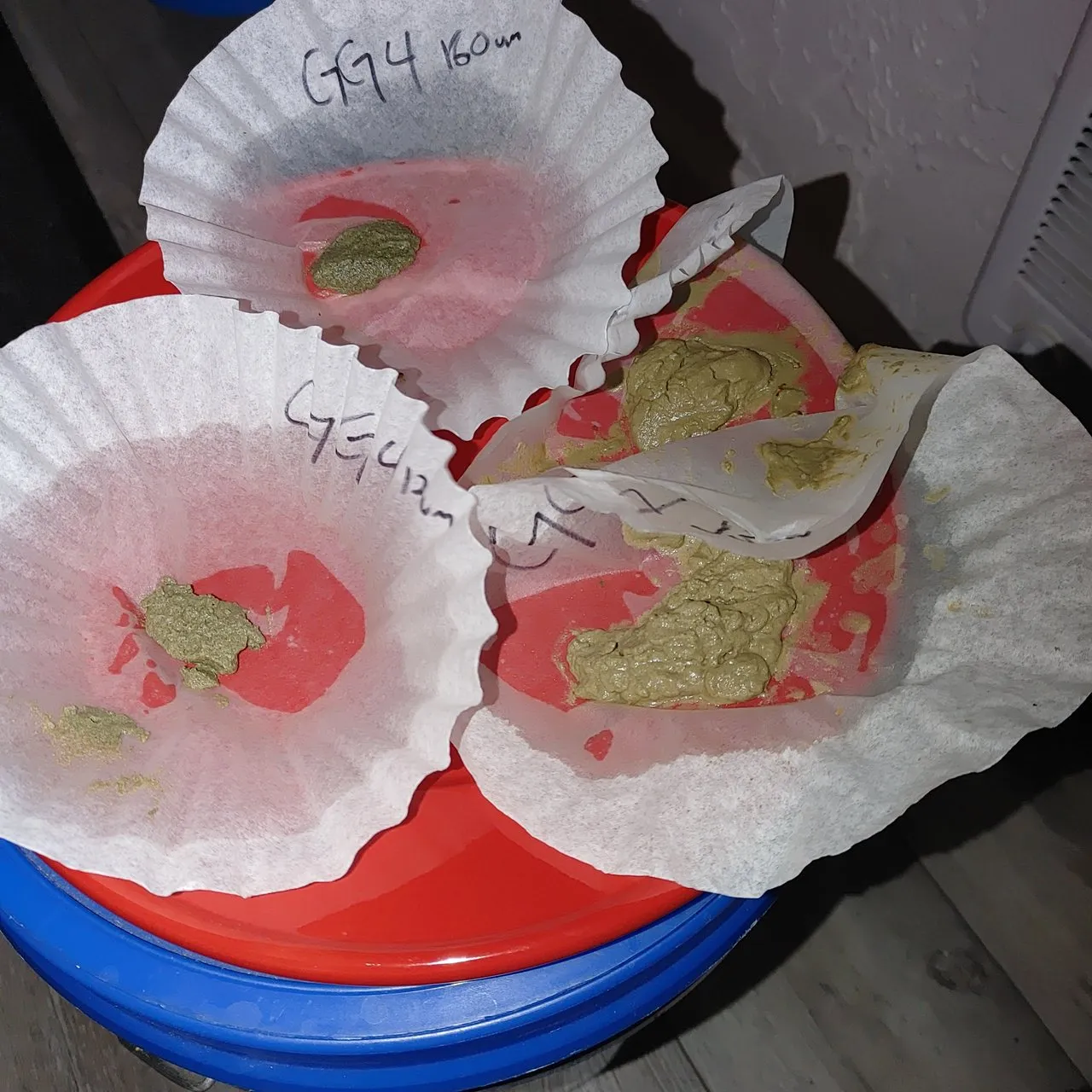
A food dehydrator placed on lowest setting is ideal but using room heaters to dry the hash can work just becareful not to get the hash too hot! Also, not picture here is I broke the globs of hash up into small yet even sized chunks with a butter knife to allow for even drying.
Once the Hash is dry we can press. We tell it is dry by squeezing a small chunk between our hands, no water should come out. Also, by using a lighter we can tell dryness by no snap, crackle and popping happening when applying a lighter, just melting and bubbling.
